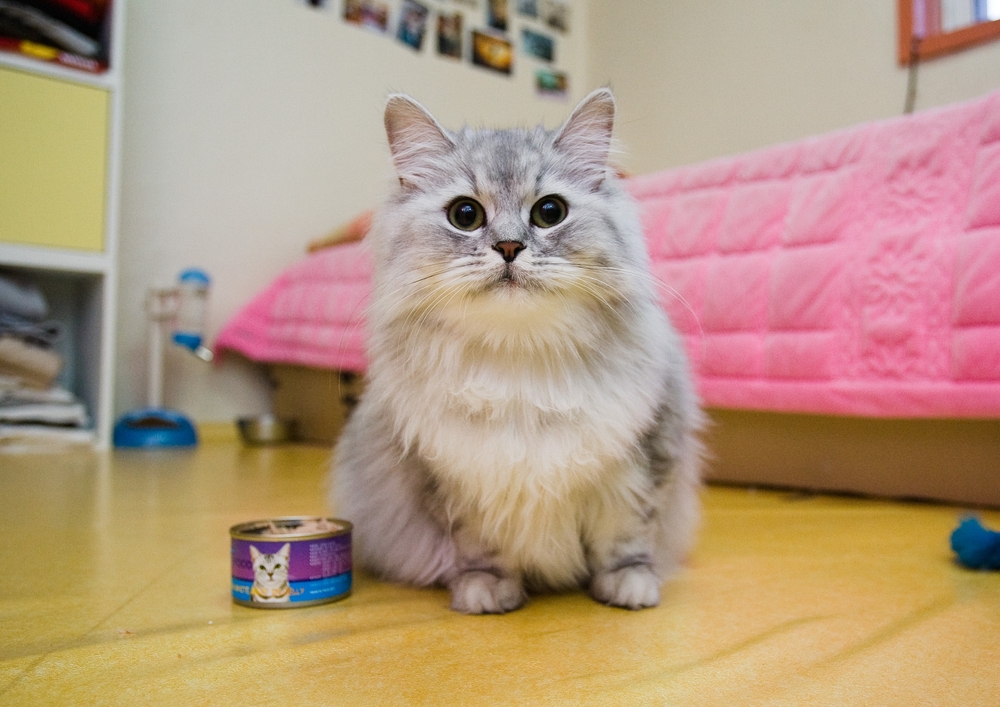Your Senior Cat: What to Expect at 7-9 Years
Published on May 03, 2012

Life is good for you and your cat. These are some of the best years of his life. Your cat is old enough to have some stable wisdom but still young enough for some whimsical play, enjoying life with plenty of curiosity and energy.
All featured products are chosen at the discretion of the Vetstreet editorial team and do not reflect a direct endorsement by the author. However, Vetstreet may make a small affiliate commission if you click through and make a purchase.
Physical and Mental Development
Between the ages of 7 and 9, your cat is much like a middle-aged person. He might start to show his age in subtle ways, such as becoming a bit mellower, or you may not notice a change at all. Cognitively, he’s as sharp as ever, and physically, he is likely enjoying good health thanks to your great care. While he’s clearly no longer a kitten, your cat is the same fun feline you’ve come to love.
While smaller cats can age more gracefully than larger cats, the differences are far less pronounced than they are among various breeds of dogs.
Behavior Changes
Many cats are just as bouncy at 9 as they were at 5 and 6, but some may be slightly less energetic. As cats begin to age, they may start having trouble handling stress. You may notice that your cat seems less tolerant of loud noises and environmental changes.
Health and Nutrition
Just like humans as they age, your cat’s nutritional needs are starting to change. Talk to your veterinarian about the type of food you are feeding him and if it is time to change his diet. Calorie reduction may be in order, but this is not necessarily the case with all cats.
For some cats, it is the type of food they eat that may need to change to keep them in tip-top shape. Specific dietary needs vary from cat to cat. However, obesity is a common medical problem among cats at this age, and it puts them at higher risk for other medical problems. As your cat enters middle age, you and your veterinarian should monitor his weight and devise a weight-loss plan if you find he’s getting a little too chunky for his own good.
Even though your cat is still enjoying good health, your veterinarian may want to start ordering more tests and monitoring his overall health more closely, even if he’s showing no symptoms. Blood, urine and stool samples are often examined as a part of your cat’s checkup. At this stage, your cat’s veterinary care is hopefully about preventive medicine and catching and treating medical problems early. Testing now, before signs or symptoms appear, allows your veterinarian to establish a baseline of what’s normal for your adult cat and could help detect many common disease processes early.
Dental problems can occur at any stage in a cat’s life, but they are more common from this age on. Your veterinarian will want to examine and probably schedule a time to clean his teeth.
Eye problems may also start to develop, so your veterinarian will examine your cat’s eyes closely for any changes.
Tell your veterinarian about any behavioral changes you’ve observed in your cat. You know him best and will be the first to notice anything new. Remember, no change is too small to mention. Since your cat can’t speak to you, his behavior can be his way of trying to tell you how he feels.
Be sure to visit the veterinarian at least twice a year. You may need to visit more often if a medical problem requires additional attention.
Pet Health Insurance Can Help
Unexpected veterinary bills can make caring for your pet challenging. Don’t let financial stress get in the way of making the best decisions for your pet. Pet health insurance can cover surprise costs such as veterinary visits, prescription medications, and life-saving procedures.
Review personalized options for your pet below:
Training Tips
Your cat, no doubt, has mastered litterbox and scratch-post basics. Maybe, however, he has developed some bad habits you’d like to change. Remember that cats learn through experience. If he enjoys jumping on you in the wee hours of the morning and sitting on your head, he’s going to keep doing it until it is no longer enjoyable for him. You might, unwittingly, have contributed to some of these habits you find so annoying. For example, if you get up and feed your cat when he jumps on you in the morning, then he has learned this is a great method to assure breakfast — now! Don’t reinforce behavior you don’t like. In other words, don’t jump up to feed him when he jumps on you.
Punishment doesn’t work for cats. It can be hard to catch a cat in the act, because he has figured out that getting caught isn’t a great experience. Some owners try to help their cats associate the crime with the punishment, perhaps by rubbing their nose in a wet spot and then taking them to the litterbox. But cats don’t learn by this association.
All he learns from this is that when a human is looking for him, he had better hide! Instead, set him up for success so you can reward him. Then he’ll associate behavior with the immediate reward. In the case of the litterbox, set up your cat’s feeding schedule so that you’re around when he has to go. This way you can catch him before the crime, encourage the appropriate behavior and give the appropriate reward. By the way, report any changes in urination, drinking, bowel movements or appetite to your veterinarian. Changes in these areas could indicate a medical problem, so don’t wait to have your kitty checked out.
This is a fantastic time in your cat’s life. He is confident, knows the rules and feels great. Don’t forget to take time to grab a new toy or a flashlight and start playing!



